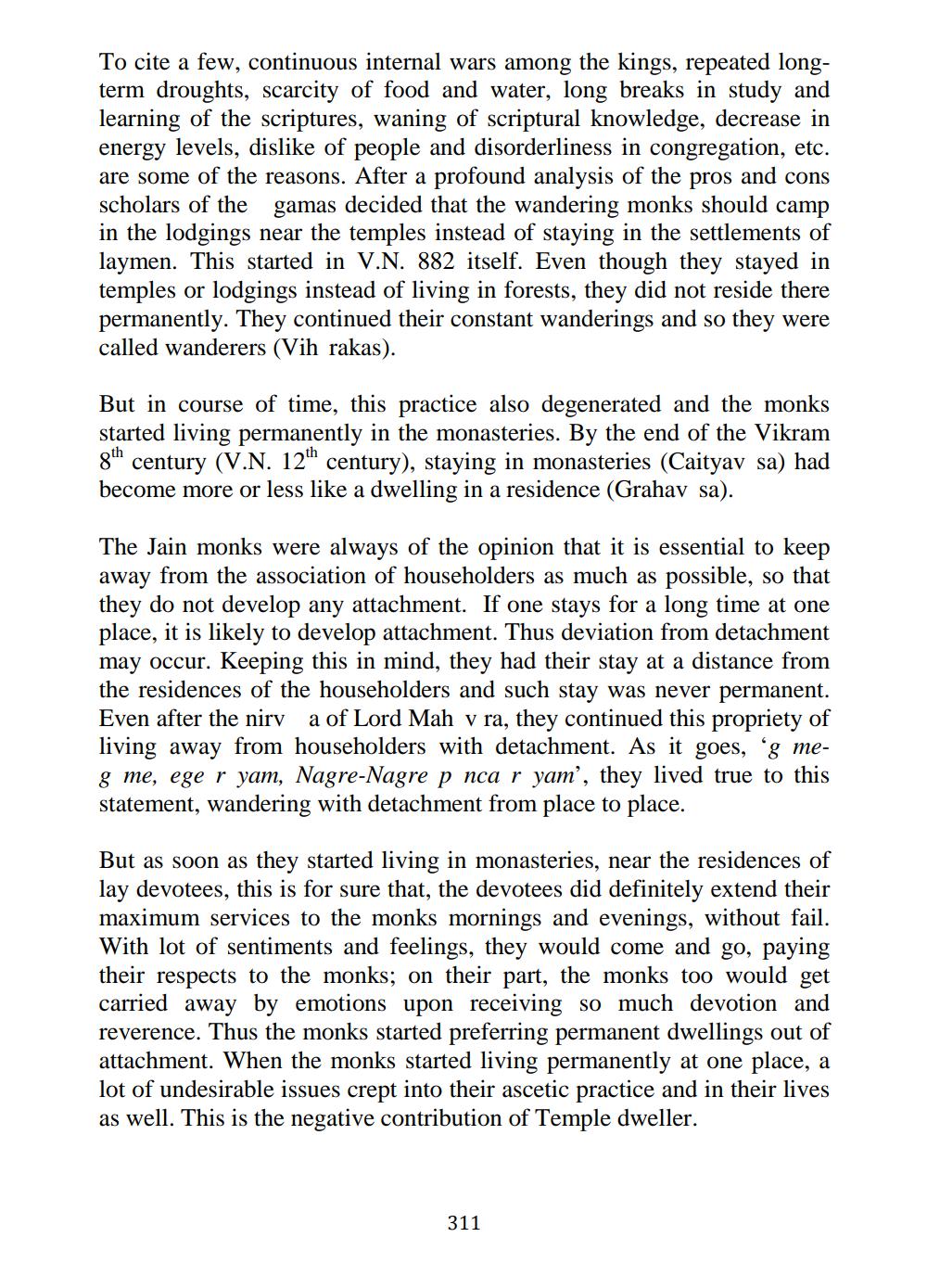________________
To cite a few, continuous internal wars among the kings, repeated longterm droughts, scarcity of food and water, long breaks in study and learning of the scriptures, waning of scriptural knowledge, decrease in energy levels, dislike of people and disorderliness in congregation, etc. are some of the reasons. After a profound analysis of the pros and cons scholars of the gamas decided that the wandering monks should camp in the lodgings near the temples instead of staying in the settlements of laymen. This started in V.N. 882 itself. Even though they stayed in temples or lodgings instead of living in forests, they did not reside there permanently. They continued their constant wanderings and so they were called wanderers (Vih rakas).
But in course of time, this practice also degenerated and the monks started living permanently in the monasteries. By the end of the Vikram gth century (V.N. 12th century), staying in monasteries (Caityav sa) had become more or less like a dwelling in a residence (Grahav sa).
The Jain monks were always of the opinion that it is essential to keep away from the association of householders as much as possible, so that they do not develop any attachment. If one stays for a long time at one place, it is likely to develop attachment. Thus deviation from detachment may occur. Keeping this in mind, they had their stay at a distance from the residences of the householders and such stay was never permanent. Even after the nirva of Lord Mah v ra, they continued this propriety of living away from householders with detachment. As it goes, ‘g meg me, eger yam, Nagre-Nagre p nca r yam', they lived true to this statement, wandering with detachment from place to place.
But as soon as they started living in monasteries, near the residences of lay devotees, this is for sure that, the devotees did definitely extend their maximum services to the monks mornings and evenings, without fail. With lot of sentiments and feelings, they would come and go, paying their respects to the monks; on their part, the monks too would get
rried away by emotions upon receiving so much devotion and reverence. Thus the monks started preferring permanent dwellings out of attachment. When the monks started living permanently at one place, a lot of undesirable issues crept into their ascetic practice and in their lives as well. This is the negative contribution of Temple dweller.
311




